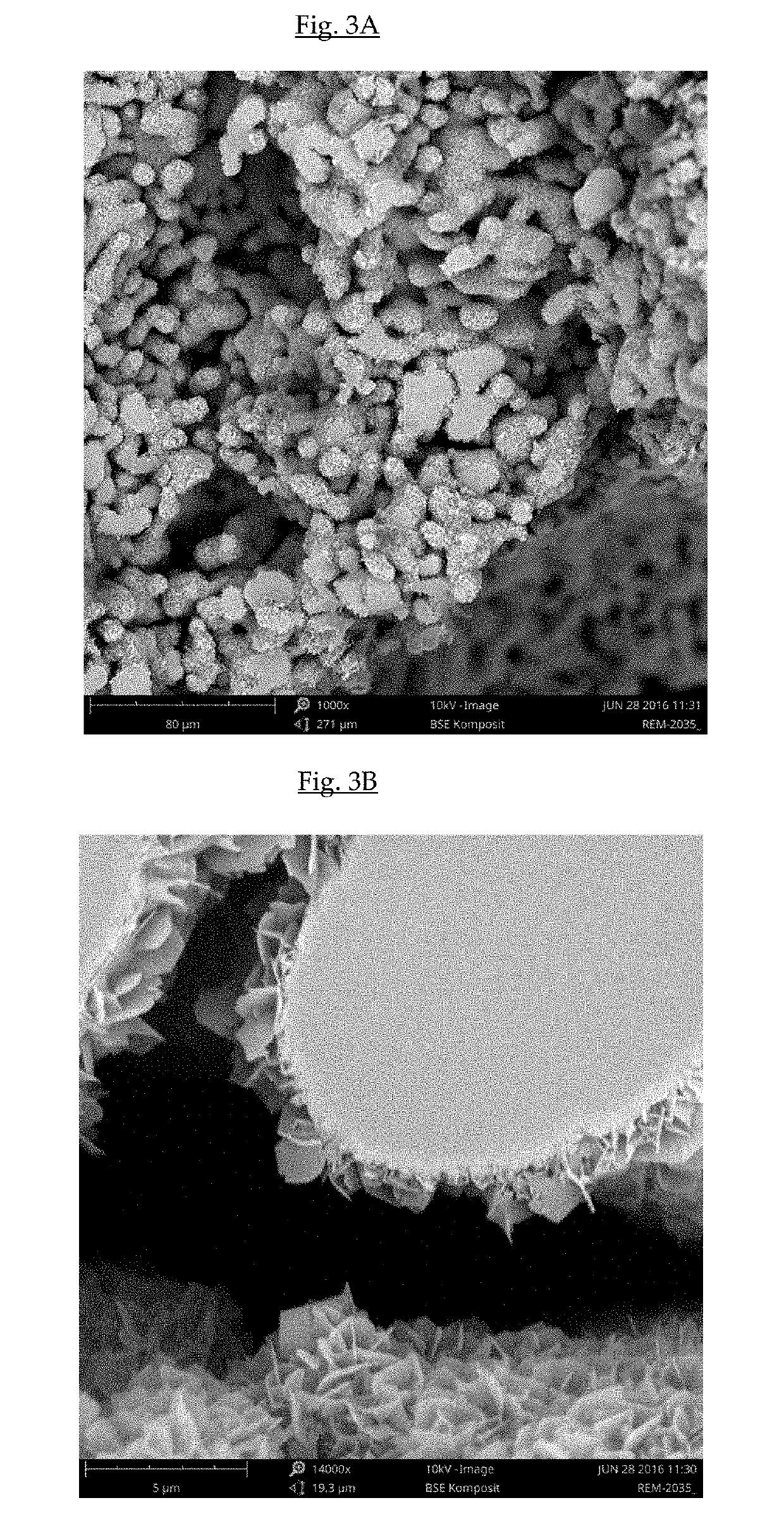Bone substitute material
- Summary
- Abstract
- Description
- Claims
- Application Information
AI Technical Summary
Benefits of technology
Problems solved by technology
Method used
Image
Examples
example 1 preparation
of Biphasic Calcium Phosphate / Hydroxyapatite (CAP / HAP) Bone Substitute Materials According to EP-B1-2445543
[0135]A bulk sintered material of alpha-TCP, porous granules thereof with a particle size of 1.0-2.0 mm and transformed granules having an epitactically grown HAP coating were prepared similarly to Examples 1, 2 and 4 of EP-B1-2445543.
[0136]364 g dicalcium phosphate anhydrous powder, 136 g calcium carbonate powder and 220 ml deionized water were mixed for 5 min at 700 rpm using a laboratory stirrer. The slurry from the mixing process was immediately transferred into a high temperature stable platinum cup. The filled platinum cup was placed in a cold furnace. The furnace was heated to 1400° C. by using a heating rate of 100° C. per hour. This temperature was kept for 12 hours and afterwards the furnace was cooled down to 800° C. with a cooling rate of 500° C. per hour, then cooled down to 300° C. with a cooling rate of 125° C. per hour and finally cooled down to room temperature...
example 2 preparation
of Biphasic Calcium Phosphate / Hydroxyapatite (CAP / HAP) Bone Substitute Materials According to the Invention
[0142]1) Preparation of Granules of Bone Substitute Material
[0143]1-2 mm sized porous granules of phase pure α-TCP were produced as described in above Example 1.
[0144]The phase transformation and coating step was performed in glass flasks placed in a water bath set to 40° C. The transformation buffer was an aqueous solution of sodium dihydrogen phosphate (NaH2PO4) mixed with different proportions of ethanol. The molarity of the aqueous solution of sodium dihydrogen phosphate was varied between 0.05 M and 0.3M and the content of ethanol between 20 and 60 w / w %. The pH of the transformation solution was between 7.3 and 7.6.
[0145]The glass flasks were filled with the transformation buffer and alpha-TCP granules were added with a ratio between 1:40 to 1:80 (granules to transformation solution). The granules were immersed in the transformation solution at 40° C. for a period between...
example 3
In Vitro Test of Osteogenic Differentiation of Fetal Human Mesenchymal Stem Cells (hMSCs)
[0163]To assess if the bone substitute material prototypes prepared in Examples 1 and 2 support osteogenic differentiation, about 200′000 hMSCs isolated from a human fetal femur after 22 weeks of gestation (commercially available from ScienCell: Cat#7500, Lot#6890) were seeded on 320 mg granules of those bone substitution material prototypes and cultivated for three weeks. The first seven days of culture the commercially available hMSCs expansion medium (MSCM Medium, Cat#7501, ScienCell) was used to optimally support cell proliferation. For the following 14 days the medium was changed to DMEM complemented with 10% FBS and Penicillin / Streptomycin. No additional osteogenic agents were added to the cell culture medium. After three weeks of hMSCs cultivation, total mRNA was isolated, transcribed into cDNA and Real Time Quantitative PCR was performed. The gene expression was calculated after the ΔΔCT...
PUM
| Property | Measurement | Unit |
|---|---|---|
| Temperature | aaaaa | aaaaa |
| Temperature | aaaaa | aaaaa |
| Temperature | aaaaa | aaaaa |
Abstract
Description
Claims
Application Information
 Login to View More
Login to View More - R&D
- Intellectual Property
- Life Sciences
- Materials
- Tech Scout
- Unparalleled Data Quality
- Higher Quality Content
- 60% Fewer Hallucinations
Browse by: Latest US Patents, China's latest patents, Technical Efficacy Thesaurus, Application Domain, Technology Topic, Popular Technical Reports.
© 2025 PatSnap. All rights reserved.Legal|Privacy policy|Modern Slavery Act Transparency Statement|Sitemap|About US| Contact US: help@patsnap.com



